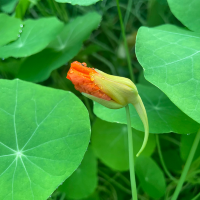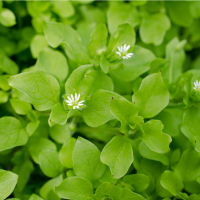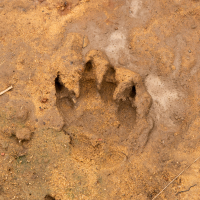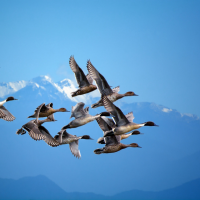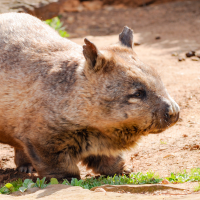5th June 2025
Listening attentively
Nature communicates through patterns, signals, and changes. We might notice declines in certain species, shifting migration, altered flowering times. Listening attentively means observing these indicators to understand ecosystem health and resilience. Today we will practise tuning in like field ecologists do, noticing, recording, and reflecting on what the natural world is telling us.
Live event
*You can use a timezone converter to check the workshop time in your area.
Nature journaling prompts and ideas
One way to actively listen to nature is to focus our journaling on the plants and environments in our care. This might be a garden, potted plants on a veranda or even our houseplants. When we commit to listening and learning from the plants in our care, it helps us become better gardeners and caretakers. To learn more about keeping a garden journal, you can watch the workshop that Bethan Burton gave for Art Toolkit.
Begin to pay close attention to the plants in your care. What conditions make them thrive? If they are ailing, what could you change to give them a better chance? Do things grow well in one position in the garden and not in others? What are the variables (like sunlight, soil conditions or moisture levels) that could be adapted to help your plants? Let your garden speak to you and listen through your nature journal.
As gardeners, weeds can be frustrating and sometimes overwhelming. However, weeds can also tell us a lot about our soil, conditions in the garden, and even be a source of nutrition. Garden coach Kate Wall believes that weeds can be useful and beneficial when we take time to pay attention to what they are telling us. In her book Working With Weeds, Kate describes how observing the weeds that appear in our gardens can help us make better gardening choices.
If you have a garden, begin to pay attention to the weeds that pop up. Where are they thriving? What conditions do they seem to like? Investigate the needs of these weeds and use this information to make choices about the plants you intentionally put in the garden. For example, if a weed that loves shade is thriving in one garden position, you can choose a shade loving plant to replace it. If you do not have a garden, you can still pay attention to the weeds in your local park or green space. Do you notice places where certain weeds overtake the landscape? What is this telling us about how we manage green spaces? How could you document this in your nature journal?
Nature is talking to us all the time. Our job is to tune-in and pay attention. Tracking small signs in nature, such as animal footprints in mud, scratch marks on bark, feathers, droppings, chewed leaves, shifting soil, is one way to listen to the stories of nature. The work of Tristan Gooley, author of many books including The Natural Navigator and The Lost Art of Reading Nature’s Signs, is a good place to start if you are interested in learning to listen to nature in this way.
Go outside and search for subtle clues that an animal or weather event has passed through the area. Sketch or describe what you find. Ask:
What might have made this?
When did it happen?
What story does this sign tell?
Let your journal become a detective’s notebook, capturing these small mysteries and the questions they spark.
The cycle of the seasons slowly turns throughout the year and there are lots of different ways that we can pay attention and document these changes in our nature journals.
Keeping a phenology wheel is one fun way to pay attention to the seasonal changes we see during the year. Nature journal educator Marley Peifer shares his experience of keeping a phenology wheel and asks questions to help you reflect on your motivation and intention.
While many people tend to think of the year being divided into four seasons, there is a Japanese calendar that notices changes across 72 micro-seasons. This year, artist and educator Alex Boon has committed to the task of noticing and documenting the micro-seasons of his landscape.
Ask yourself the question: What season is this place in right now, and how do I know? Record signs of the season using words, sketches, colour, or collected items.
Threatened species are indicators that the way we are interacting with the natural world is out of balance. When we pay attention and listen to the stories of vulnerable species, we can hear what nature is telling us. We need to change our behaviour and start protecting our world if we want to reduce the extinction rate.
Choose an endangered or locally threatened species and learn a little about its habitat, its role in the ecosystem, and the reasons for its decline.
Then reflect in your journal:
What is this loss telling us?
What has this species witnessed?
What might it need from us now?
Express your response with words and sketches in your nature journal. Then, take it one step further and let your journal page motivate you to take one positive action. For example, donate to a charity working to protect this species or it’s habitat, or write a letter to your local representative asking for action on behalf of this vulnerable species.
If you are enjoying the week, please consider making a donation to help cover the cost of running the event.
Your generous support helps make International Nature Journaling Week possible.
Thank you!


